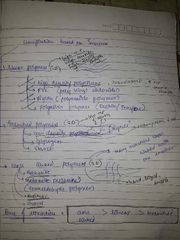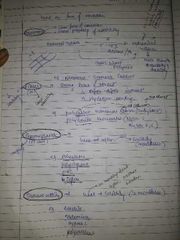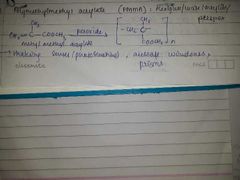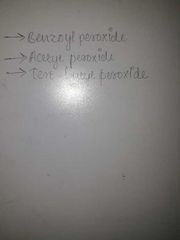![]()
![]()
![]()
Use LEFT and RIGHT arrow keys to navigate between flashcards;
Use UP and DOWN arrow keys to flip the card;
H to show hint;
A reads text to speech;
19 Cards in this Set
- Front
- Back
|
Nylon 6,6 monomer? |
Adipic acid Hexamethylene diamide |
|
|
Natutal rubber monomer |
Isoprene units |
|
|
Gun cotton |
Cellulose triacetate |
|
|
Dacron or terylene monomer |
Terepthalic acid Ethelene glycol |
|
|
Buna S and Buna N |
1,3 butanamide + styrene 1,3 butanamide + vinyl cyanide |
|
|
Bakelite |
Phenol + formaldehyde |
|
|
Nylon 6 |
E Caprolactum |
|
|
Give examples of linear, Branched and cross linked polymers |

|
|
|
Examples of Elastomers, fibres, thermosetting and thermoplastic polymers |

|
|
|
Catalalyst for polymerisation of polyethene |

|
|
|
Diff between : 2. Isoprene 2. Polyisoprene 3. Chloroprene 4. Neoprene |

|
|
|
Polymethyl methyl acrylate |

|
|
|
Rayon |
Cellulose acetate |
|
|
Free radical generating initiator |

|
|
|
Temperatures for formation of 1. Nylon 6,6 2. Nylon 6 3. Polyesters |
1.553 2.543-533 3.420-460 |
|
|
State 5 characteristics of Natural Rubber |
1. Soft at high temperatures (more than 335 K) 2. Brittle at low temperatures (less than 283 K) 3. High water absorption capacity 4. Soluble in non polar solvents 5. Non resistant to attack by oxidizing agents. |
|
|
Temperature range of vulcanisation |
373 to 415 K |
|
|
Cross linking agent in tyre rubber |
5% Sulphur |
|
|
Uses of styrene |
1.Insulator 2. Wrapping material 3.manufacture of : toys, radio, TV cabinets |

